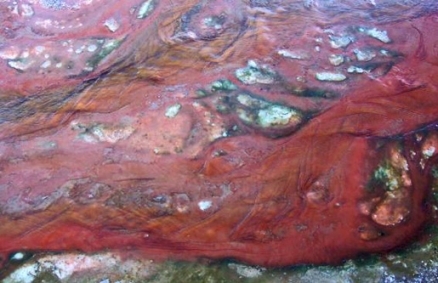Aguaje (Ecology)
Aguaje
Aguaje is a condition observed annually in the Pacific coastal waters off of Peru and Equador, in which the water is discolored red or yellow, with an accompanying significant loss of marine life. Also known as El aquaje, this circumstance typically occurs from April through June, and is likely caused by an increase in water temperatures via the importation of warmer waters by ocean currents. This causes the death of temperature sensitive marine organisms such as dinoflagellates, which may in turn kill other organisms via the release of toxins. The annual nature of this phenomenon makes it distinct from the El Nino phenomenon occurring in the same region. This phenomenon is also known as salgaso or aqua enferma.
Phenomenology
This aguaje phenomenon appears to be initiated by penetration of sunlight into the epipelagic zone of the ocean, and subsequent warming of shallow coastal Peruvian waters; this activity accompanying by warming sea surface seasonal temperature hastens planktonic decomposition in such a fashion that discolors the ocean and generates oceanic hydrogen sulfide to a degree that results in death of many minute marine organisms.
Further Reading
- Seas of the world on the Encyclopedia of Earth
- Institute of Oceanographic Sciences (Great Britain) 1962. Discovery reports: Volume 31. books.google.com, National Institute of Oceanography, Great Britain. Colonial Office. "Discovery" Committee
- American Fisheries Society. 2003. Journal of ichthyology: Volume 43, Pages 417-827 books.google.com, Scripta Technica, inc
- U.S. Naval Oceanographic Office. 1967. Science and the sea: Volume 1. books.google.com 80 pages
